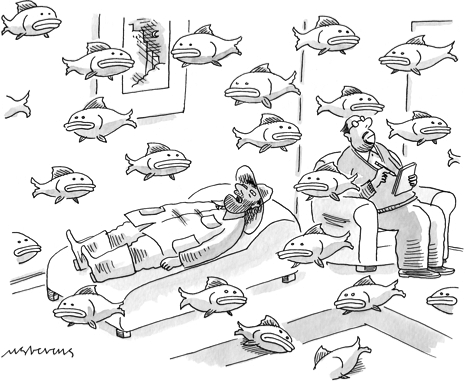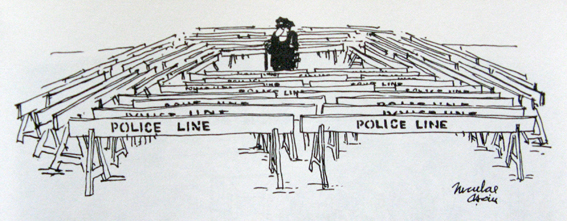What is drawing? Is it possible to define it as one of the basic way of expression of mankind? I think so. And as a so elementary medium it is also possibly the most versatile. That’s why I’m so fascinated by this powerful medium, I guess.
The sign traced on the ground, at first, and then on rock, paper and many other materials is the most immediate gesture, which remains for the future. It is something that survives the moment it is done, it’s time itself expressed, and gives the possibility of a general overlook on the process of tracing, and therefore of thoughts. As an expression of time it’s the best medium to communicate something of that moment, every idea, process, image. The zeitgeist of a precise moment. Applying the drawing process in history, humanity had described itself for millenniums, and the language didn’t replace this medium, and overpassed its power.
There’s a book who in which this process appears evident, a book who inspired these considerations: “The New Yorker Album of Drawings 1925-1975” by Penguin Books (ISBN 0140049681). It is a collection of cartoons from the famous american magazine, all the cartoons from several artists, Saul Steinberg, William Steig, Richard Taylor, Peter Arno, Charles Barsotti, Geoge Booth, Barney Tobey, James Thurber and Charles Saxon among others, that contributed to its celebrity and authoritativeness. Many designers and artists worked and keep on working for the magazine, expressing by cartoons the daily facts, the ideas they had and their considerations on every topic that comes into their mind. The book as a powerful archive of human activity, a window open on a huge part of social, cultural, politic context of our times.
Through a closer look to its cartoons it is possible to spot many of the concepts i’ve mentioned in the first lines of this essay. For instance, this cartoon by Steinberg, in its essentiality, holds the articulated concept of the idea that becomes gesture and then sign, being able to disclose its nature. It happens, as in this case, that the sign itself tells much more than a thousand words. In fact, I won’t spend more words on this concept.
But drawing is also subjective, being the expression of a singularity. In this cartoon the dancing girl expresses something through her gesture (which, in this case, don’t concretizes itself into a sign), but every one of her class mates gets a different concept from the one she feels. It’s clear that, so as in tracing sign everyone puts something of him/herself, in acknowledging it the viewer puts what is part of his/her experience of the world. This causes the fact that drawing as a medium is also very personal, and even if is possible to state that there are not good drawers and bad drawers (the sign is not objective, but reflects the exact image of the drawer), is also possible to say that a good drawing, on the field of expression, is the one that communicates in the best way the concept that inspired it, and the purest it is, the better the idea goes straight into the viewer.
 Considering the history, thou, the drawing had always been the way to describe the zeitgeist of a period, through the widest range of expressions. Is it personal or or collective, then? Is it the personal expression of a singularity or the collective depiction of a society? I think that it is both, depending on the scales we can consider drawing, as the process that turns the expression of a singularity into a depiction of a society is also a collective process.
Considering the history, thou, the drawing had always been the way to describe the zeitgeist of a period, through the widest range of expressions. Is it personal or or collective, then? Is it the personal expression of a singularity or the collective depiction of a society? I think that it is both, depending on the scales we can consider drawing, as the process that turns the expression of a singularity into a depiction of a society is also a collective process.
Another question. The culture influences the art of drawing and drawing itself builds consciousness and culture. Is there a good use we can make of it?
Rietveld > lib. cat. no: 738.8 new



